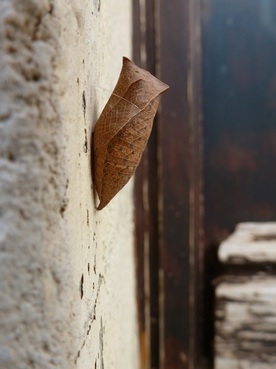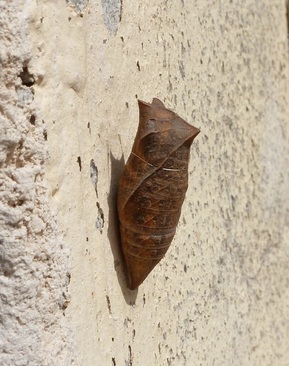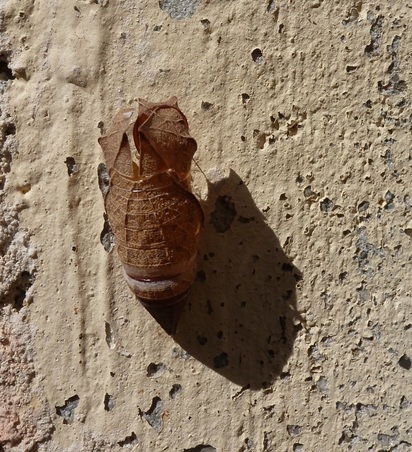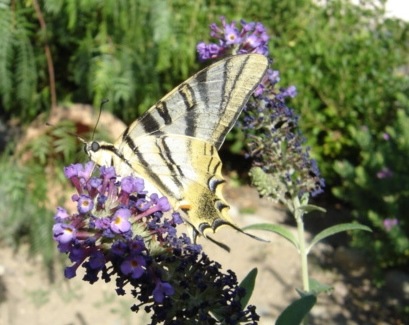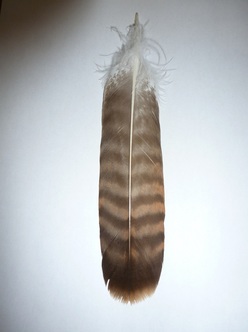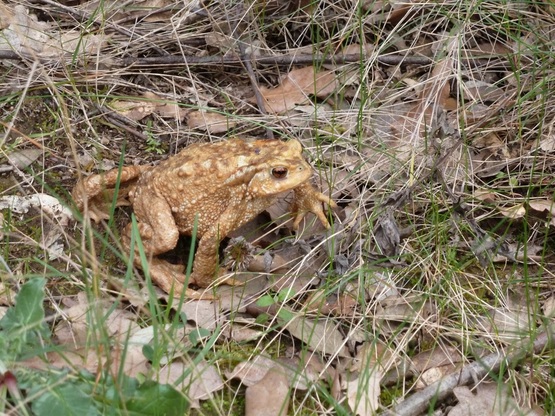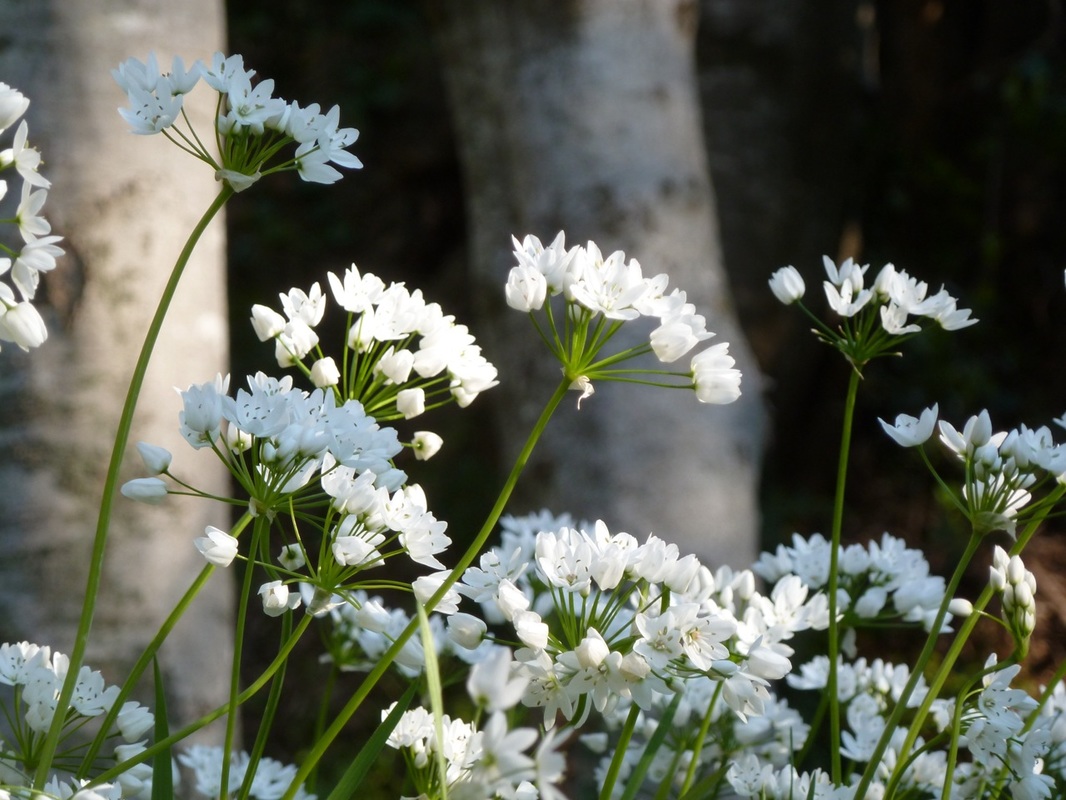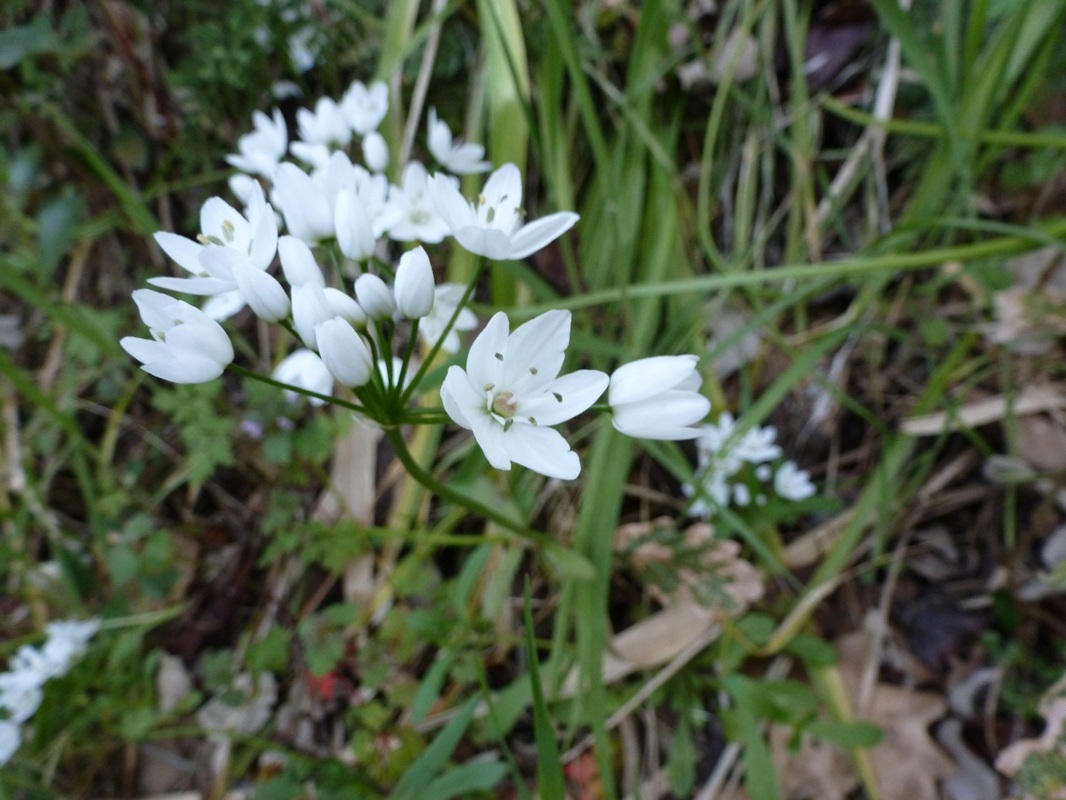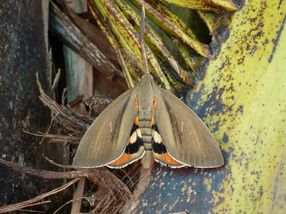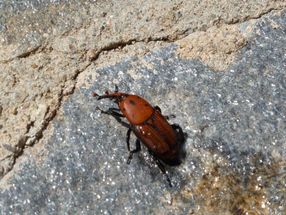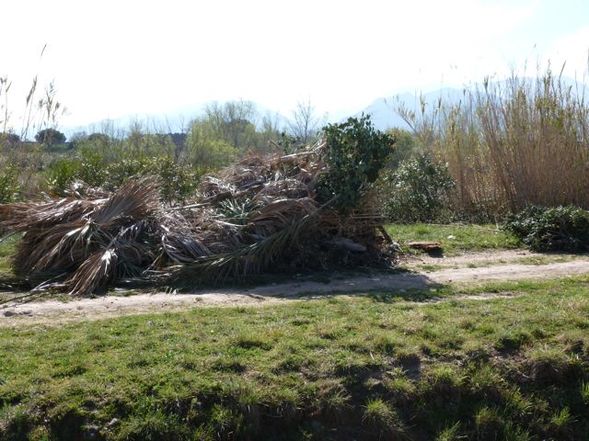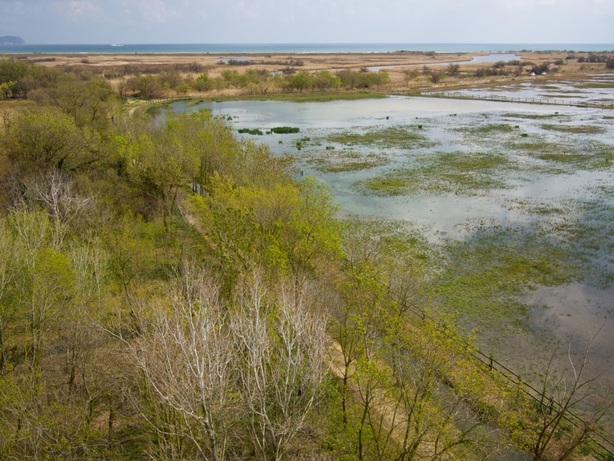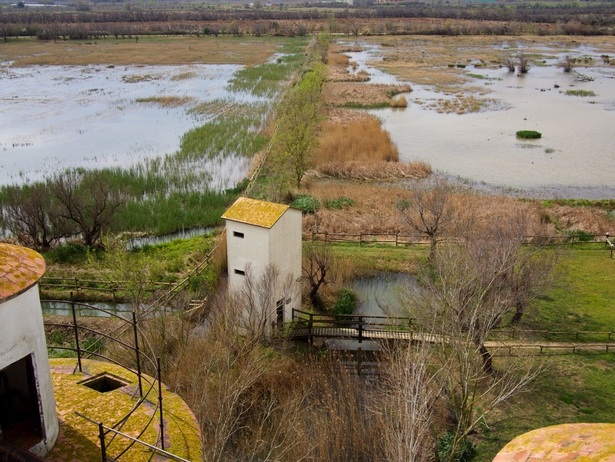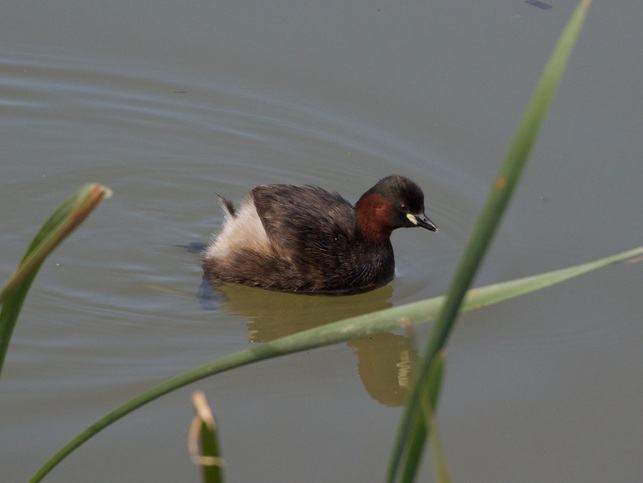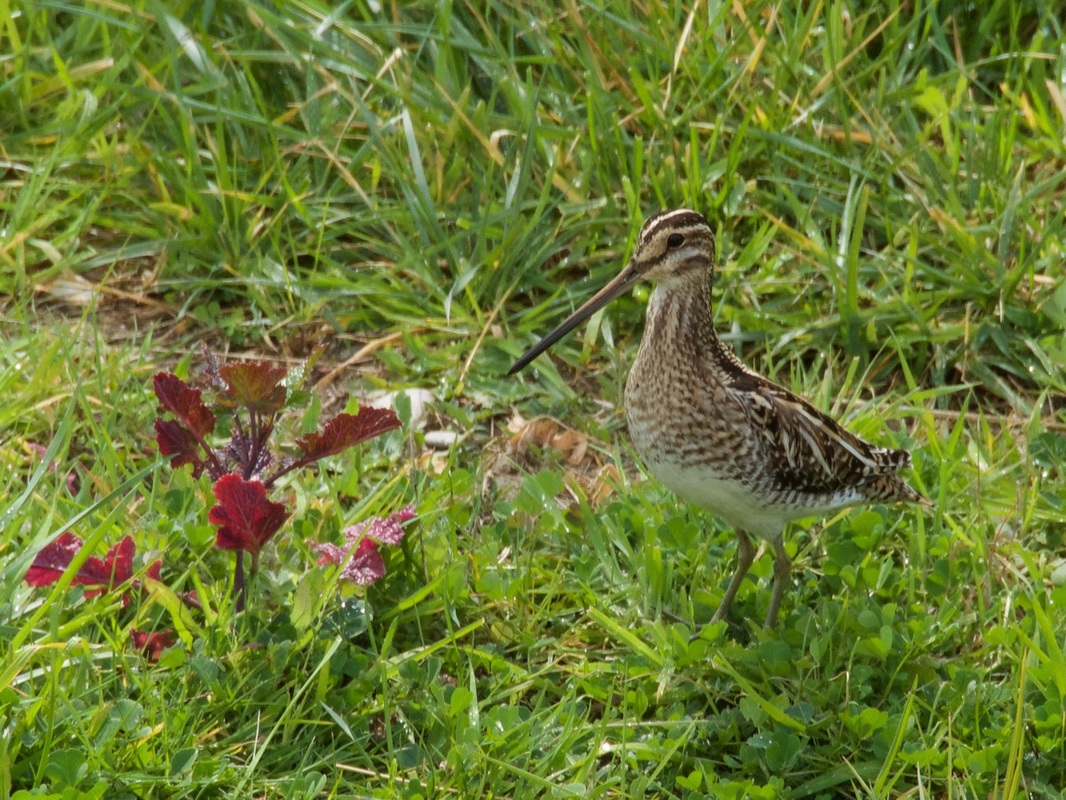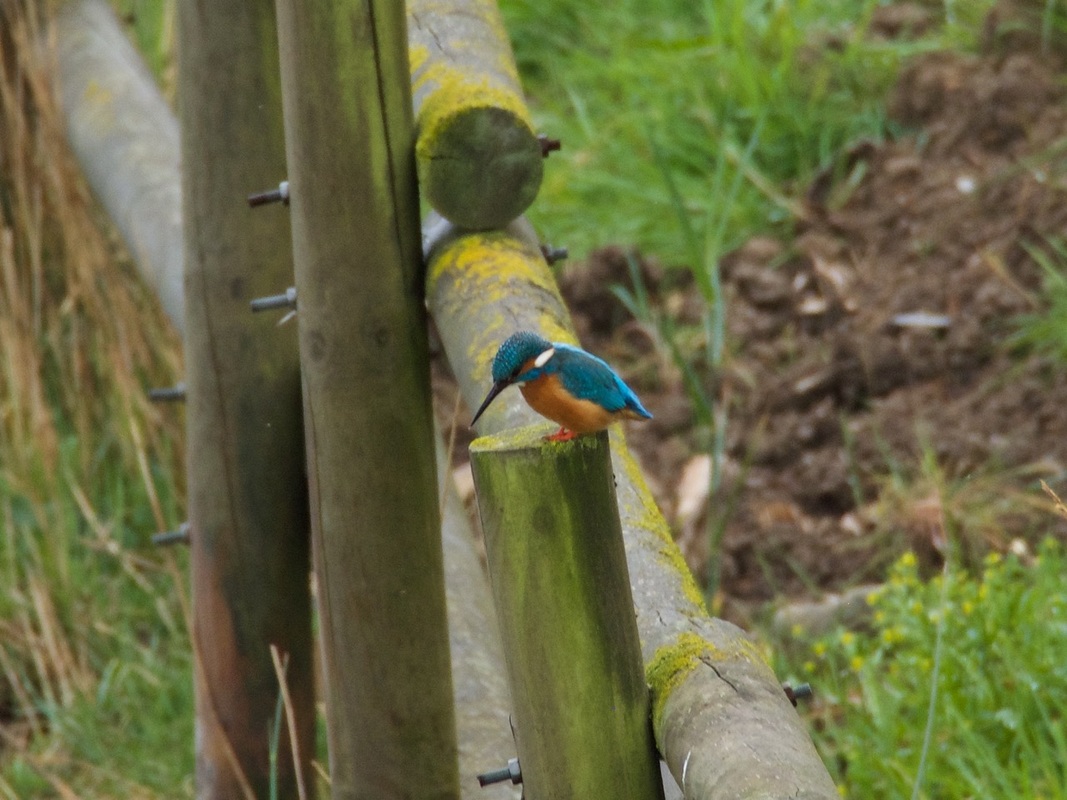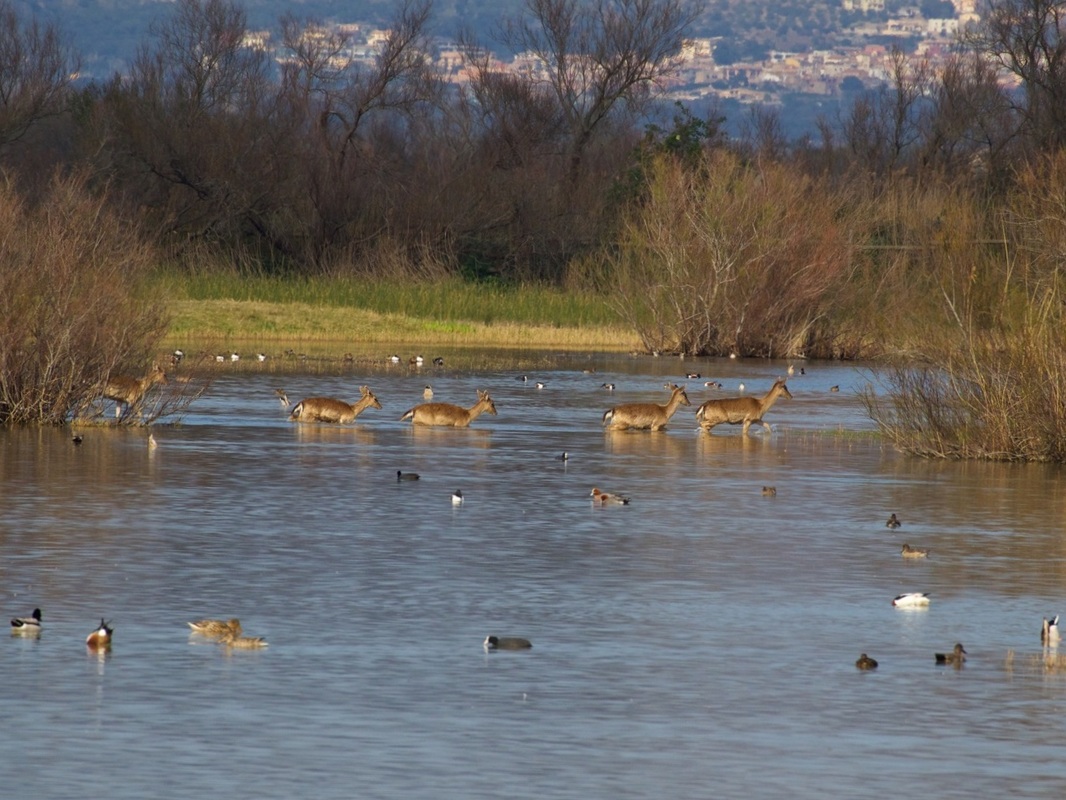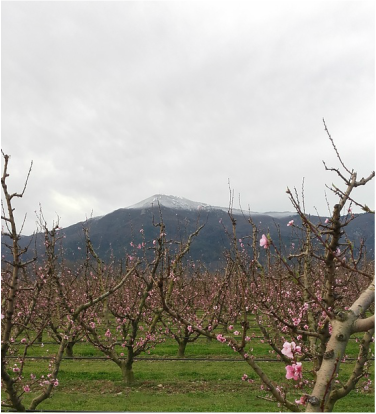In January I wrote about finding the pupa of a scarce swallowtail on a wall of our house. I've been keeping an anxious eye on it ever since, especially this month as the butterfly should emerge in March; assuming it's still alive at all.
I must admit to wishing it would get a move on - we want to paint the wall and door next to it but can't until this lodger has left! I'm sure many people will think I'm being silly about wanting to preserve one insect out of trillions. But to deliberately destroy something like this, after all that effort and all that time, simply because it's inconveniencing our decorating plans, seems wrong. Nature makes the odds of its survival low enough.
A few days ago I noticed the pupa "shell" had darkened considerably, which I hoped was a good sign.
I don't know the answer to that, but I was hopeful today when the wind dropped and the temperature soared to 24 degrees in our garden. The sun wouldn't strike the pupa until the afternoon though. Would it stay warm enough for long enough?
When I went to check again at about 2pm - hurray! - it had gone! I'd missed the birth while writing my previous blog! Damn. But the sight of that empty shell made me beam like a proud mum. And that was the first time I touched it. It was papery thin and delicate; I tried to carefully pull it off the wall so I could examine it more closely - only to find it still very firmly attached. I need never have worried about that wind. Isn't nature clever?
There was no sign of the butterfly in the garden, and I'm so sorry not to have seen it, but - daft as I am - I wished it a long and happy life. "Born" 26th March 2016 - the same day the first leaf opened on our vine, and I heard my first wryneck of the year.
